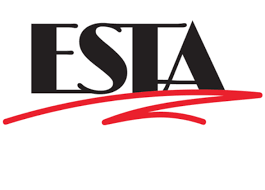
NYC – Three more ESTA standards have been posted for public review at http://estalink.us/pr. The public reviews close at the end of the day December 17, except for one that ends on December 24. In alphanumeric order they are:
More details from ESTA (www.esta.org):
ANSI E1.34 – 2009, Entertainment Technology – Measuring and Specifying the Slipperiness of Floors Used in Live Performance Venues, is being considered for reaffirmation again (i.e., no changes in requirements, only updating organization name, address, copyright date, etc.) The document describes a simple means of measuring and specifying the slipperiness of floor surfaces used by performers in live entertainment venues. The standard is not for normal walking and working surfaces, but only for those floor surfaces used by actors, dancers, and other similar artists when performing before an audience. Comments are due before the end of the day on December 17; the review is over when December 18 starts.
BSR E1.37-5, General Purpose Messages for ANSI E1.20, RDM, is a new standard that creates new Get/Set parameter messages (PIDs) for use with the ANSI E1.20 Remote Device Management protocol. Comments are due no later than December 24. The review is over by December 25.
BSR E1.62, Minimum specifications for mass-produced portable platforms, ramps, stairs, and choral risers for live performance events, is a new standard for mass-produced portable platforms, stair units and ramps used with those platforms, and choral risers, designed to be used for the presentation of music concerts, dramatic plays, fashion shows, and other entertainment and special events. The units covered by this standard are of a size and weight that allows them to be moved and erected by one or two people. Larger, heavier units are outside the scope of this standard. The scope also covers the railings provided as fall protection accessories, and to the legging systems. The draft standard was offered for public review in early Autumn. Comments received were addressed by making a few changes to the draft. The changes were substantive, so another public review is necessary. Comments are due no later than December 17.


